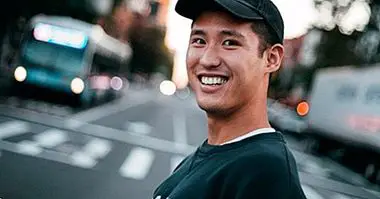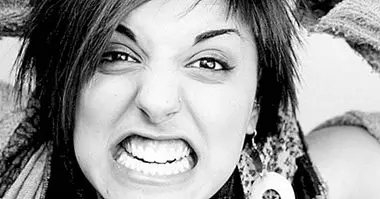Concealed conditioning: what it is, what are its phases, and techniques
Behaviorism is one of the best-known paradigms of psychology Throughout history, its almost exclusive focus on human behavior being based on the principles of learning through the association between stimuli. Born as opposed to psychoanalysis, he proposed the need to focus only on the observable aspects, and without considering the participation of the mind as scientifically studied.
It would not be until the arrival of cognitivism that cognition and other mental abilities would appear in the scientific and empirical models of our mind and behavior, although before its appearance there was already an opening on the part of the behavioral current to exploration and incorporation. of aspects less directly observable.
Thus, both paradigms are closely related, even reaching some theoretical models and therapeutic modalities that work from an intermediate point between both paradigms. Clear example of this is the so-called covert conditioning .
- Related article: "Behaviorism: history, concepts and main authors"
The concealed conditioning
We understand concealed conditioning one of the best known psychological models based on the conditioning of behaviors. Like the rest of the conditioning, the model considers that our behaviors can be understood based on the association between stimuli, responses and consequences of the latter (more stimuli) , generating new associations by coordinating their appearance, and that it is possible to alter the frequency of a specific response based on its consequences. Applied in therapy, this would allow us to modify a dysfunctional response or learn a specific behavior.
However, unlike in non-concealed models, the elements that would be used to modify the behavior would be cognitive and not physical. In fact, we observe the existence of directly or covertly unobserved factors (such as thought) that are the basis of behavior modification and that serve as a basis for covert conditioning. Specifically, one of the most relevant factors is the use of imagination as a fundamental variable.
It is considered that the main father and propellant of the covert conditioning was Joseph Cautela , which would begin to apply the main conditioning principles to cognitive elements such as symbolization, language and imagination. However, it is also worth noting the important role of other authors such as Wolpe and Homme, who would serve as precursors in creating the first systematic desensitization (from which a considerable proportion of the covert techniques departs) and the second in demonstrating that elements as language could be controlled at the experimental level.
Your theory
This model does not start from nothing, but is based on different assumptions or basic principles.
First it starts from the principle of homogeneity between overt and covert behaviors In other words, it is assumed that the extractable conclusions of the manifest phenomena can also be applied to the covert ones.
The second of the principles is that of interaction between both : the manifested and the hidden processes interact (for example to relax physically we think in concrete situations). The third and last proposes that both the observable and manifest as well as the hidden follow the same laws of learning.
The research carried out seems to reflect these assumptions, being able to use the same techniques in imagination as in vivo and seeing that there is a palpable effect of the interaction between concealed and overt elements.
Basic procedure: phases
The covert conditioning can be applied through different techniques, which we will see later. However, regardless of the technique used usually a specific process divided into different phases is used .
1. Educational phase
At first the professional explains the model and the technique to be used by the patient, clearing the doubts of this and justifying the reason for the use of this technique .
2. Phase of evaluation and training in imagination
The use of techniques based on covert conditioning requires a certain capacity for imagination and visualization, these aspects being something in which different patients can differ greatly. Thus, it will be necessary to assess the patient's ability to form mental images and put themselves in different situations through imagination , and in cases where it is necessary to train him in it.
3. Application phase of concealed conditioning in consultation
Throughout this phase will proceed to apply, in a controlled situation, the covert conditioning. Initially a conditioning will be generated associating mental images of behaviors and consequences, making a large number of pairings. About twenty essays are recommended. Little by little the patient will be reducing the level of help he gets from the professional as you master the technique.
4. Consolidation and generalization phase
This last phase focuses on getting the patient to be able to do the conditioning on his own and to make him more and more autonomous, also programming homework.
Techniques based on this model
We have previously reflected the basic phases of techniques based on covert conditioning. However, there are a large number of techniques that can be used in the treatment of the problems presented by the patient. Some of the most relevant are those that follow.
1. Positive reinforcement / undercover negative reinforcement
The covert reinforcement, positive or negative, is based on the fact of generating some kind of stimulation or consequence that causes an increase in the probability of repetition of the behavior that you want to generate or increase , but in imagination.
It seeks to bring the patient closer to the conduct of the behavior, often being used together with systematic desensitization to reduce reactions such as anxiety. In the case of positive reinforcement we would use some kind of appetitive stimulation for the subject, whereas in the negative reinforcement we would use the withdrawal of an aversive stimulus. It is used in situations such as exposure to phobias, inhibited or avoided behaviors in other disorders or for learning skills.
- Maybe you're interested: "Types of phobias: exploring the disorders of fear"
2. Concealed awareness
The covert sensitization is based on the reduction of the probability of issuing a behavior through the presentation of a contingent aversive stimulus to said behavior. It seeks to inhibit or reduce the response generating negative responses such as anxiety to the appearance of behavior. It is used in addictions and paraphilias, for example .
It would be equivalent to positive punishment, in which a behavior (punishment) is reduced by adding (positive) an undesirable and annoying stimulus. When disguised, what would be done is to imagine the problematic behavior to reduce or eliminate associated with aversive situations.
There is one modality, covert assisted, in which in fact a real stimulation is applied even though the aversion is imaginary . In cases where there is a lot of anxiety or difficulties to imagine oneself, it can be done in a vicarious way: imagining another person doing the behavior and suffering the negative consequences.
3. Covert response cost
Equivalent to negative punishment or response cost, it is based on the decrease in the probability of performing a behavior through the withdrawal of an appetitive stimulus . The subject is made to associate the performance of behavior with the withdrawal of some reinforcer. It is used, for example, in paraphilias or in other types of maladaptive responses.
4. Concealed modeling
Modeling is a technique in which the observation and subsequent repetition of a behavior is sought through the visualization of a model that performs it. In the case of covert modeling, the model in question would not exist physically but the subject should imagine a subject different from himself carrying out the activity that he wants to train . Little by little and through the repetitions, the imagined model becomes more and more like the subject.
It is recommended first that the model is hesitant and that it presents some difficulties, and then perform the action with great mastery. Finally, the patient is asked to imagine himself performing the action without difficulties and dominating the situation. The main objective is to learn new behaviors, similar to positive reinforcement.
5. Covert assertion
Based on self-control, this technique is based on the reduction of Negative emotions and cognitions towards oneself that make it difficult to achieve success in meeting objectives or coping or overcoming a situation through the use of positive verbalizations. Thus, it would be a matter of reducing self-criticism through the generation of positive assertions that generate well-being.
- Maybe you're interested: "Low self-esteem? When you become your worst enemy"
6. Triad of self-control
Technique designed by Cautious itself that includes elements such as the stop of thought (which in itself is another technique of concealed conditioning) or conduct in the subject is subvocally ordered the cessation of behavior or thought to reduce , to later perform relaxation exercises such as breathing and then visualizing positive scenes.
Bibliographic references
- Dahab, J .; Rivadeneira, C. and Minici, A. (2005). The techniques of concealed conditioning. Journal of Behavioral Cognitive Therapy, 9.CETECIC.
- Almond, M.T .; Díaz, M. and Jiménez, G. (2012). Psychotherapies CEDE Preparation Manual PIR, 06. CEDE: Madrid.



















